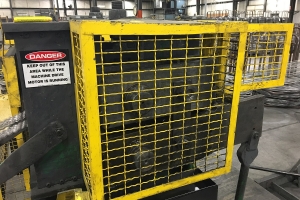OSHA wins new round on enforcement power, this time on records
OSHA has won another round in its bid to expand its enforcement power, underscoring the need for employers and insurance companies to be careful not to dig a hole for themselves when they conduct safety audits and accident investigations.
A U.S. District judge in Illinois ruled recently that Grinnell Mutual Reinsurance Company had to turn over to OSHA loss control reports, applications for insurance coverage, correspondence, site safety inspections and other safety-related documents it prepared for a grain company where a fatal accident occurred.
As Matt Morrison of the Sherman and Howard law firm wrote, this decision underscores the need for companies to immediately consult legal counsel after an accident. Not only will that help the company understand its legal rights, it may also allow the company to conduct its internal investigation under the auspices of attorney-client privilege, which would protect the investigation from outside disclosure.
Recognizing that OSHA, as well as plaintiffs in lawsuits, will seek safety-related documents after an accident, Morrison offered the following recommendations to employers, insurance companies and consultants:
• Record the known facts, not opinions or speculation. Speculation or opinions, particularly as to the cause of an accident or the existence of a hazard, are often misinterpreted as admissions as to what actually happened. If a cause is only “suspected” or “unknown,” say so.
• Avoid placing blame or admitting legal violations. Statements that supervisors violated company rules or committed “OSHA violations” can significantly impact a company’s liability.
• If a problem is noted, always follow up and document that corrective action has been taken. Almost all safety audit forms have a space to note recommended or completed corrective action. Failure to take corrective action may be construed by OSHA as willful conduct.
• Be truthful. A false statement in a safety audit can be very damaging. Make certain that all audits are carefully reviewed and, if necessary, corrected for accuracy.
• Consider a safety documentation retention policy. Depending on your company’s needs, it may be unnecessary to retain health and safety audits or other safety documentation indefinitely. Make certain any document retention policy complies with applicable law.
• Insist that others preparing audits or other safety documentation for your company recognize the importance of careful drafting. Insurance companies, outside consultants, or others providing safety or loss control services often commit the errors discussed above. Discuss your concerns about proper documentation in advance.
• Seek legal advice immediately after a fatal or catastrophic accident, and in other appropriate circumstances. Because of potential liability, legal counsel should be consulted in the preparation of accident reports, safety audits, and other documentation. It may be possible to have the company’s investigation conducted under the “attorney work product” privilege or the “attorney-client communication” privilege, thereby providing protection against disclosure to OSHA or third parties.


